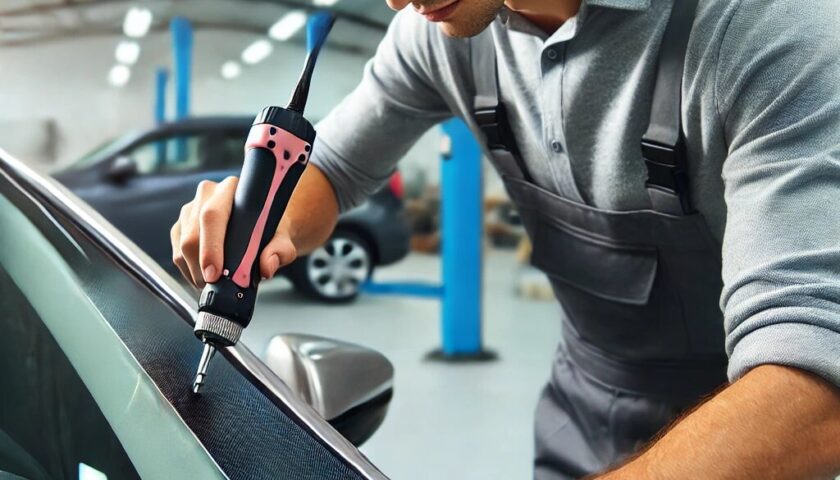Introduction
The aquaculture industry, vital for sustaining our growing global population’s demand for seafood, is poised for tremendous growth. However, beneath the shimmering waters and the promise of abundant yields lie numerous challenges that aquaculture professionals face daily. Among the most pressing is the maintenance of the specialized equipment that keeps aquaculture operations afloat. From nets and pens to aerators and feeding systems, the efficient upkeep of these tools is paramount. In this blog, we plunge into the depths of aquaculture equipment maintenance, exploring the unique challenges that arise in this underwater world and providing solutions to ensure the industry’s sustainable growth. Join us as we dive into the world of aquaculture and uncover the key to maintaining the delicate balance between seafood production and equipment reliability.
What does aquaculture equipment mean?
The production of aquatic plants, aquatic animals, and other aquatic species is known as aquaculture. In aquatic habitats, organisms are bred, raised, and harvested. As a result, equipment utilised in aquaculture farming is referred to as aquaculture equipment. The aquaculture sector has demonstrated tremendous development potential over the past year and has gained substantial momentum in terms of growth rate. Consequently, an increasing number of firms are joining this market.
Aquaculture equipment refers to the specialized tools, devices, machinery, and infrastructure used in the process of aquaculture, which is the farming of aquatic organisms, including fish, shellfish, aquatic plants, and other aquatic animals, in controlled water environments.
Aquaculture equipment includes a wide range of items such as:
- Ponds and Tanks: These provide the primary environments for raising aquatic organisms, such as fish and shrimp.
- Aeration Systems: Aeration equipment ensures that the water has the appropriate levels of oxygen for the organisms, as oxygen is crucial for their respiration and growth.
- Feeding Systems: These are used to dispense feed to the aquatic organisms, either manually or automatically.
- Netting and Enclosures: Nets and pens are used to contain the aquatic organisms and protect them from predators.
- Water Quality Monitoring Devices: These instruments measure parameters like temperature, pH, salinity, and dissolved oxygen to ensure optimal water quality.
- Harvesting Equipment: Tools for collecting the mature organisms, such as fish pumps and harvest nets.
- Hatchery Equipment: For breeding and hatching fish and other aquatic species.
Expansion rate in aquaculture equipment market
- Data Bridge Market Research’s comprehensive analysis reveals a promising outlook for the global aquaculture equipment market, with an anticipated value of USD 1,768,662.49 thousand by 2029.
- This prediction underscores a noteworthy Compound Annual Growth Rate (CAGR) of 4.1% during the forecast period, highlighting the market’s potential for steady expansion. Among the various types of aquaculture equipment, water purification equipment takes the lead as the largest segment, emphasizing the industry’s dedication to maintaining optimal aquatic conditions for aquatic organisms.
- The global aquaculture equipment market report extends its coverage beyond growth figures, delving into essential aspects that significantly impact the market landscape. Pricing analysis is provided to offer insights into the competitive pricing strategies within the industry, a critical consideration for businesses and investors.
- Furthermore, the report incorporates patent analysis, showcasing the innovations and intellectual property driving the sector’s growth. This reflects the constant efforts to enhance equipment design and technology in the aquaculture field, promoting sustainability and efficiency.
Challenges in Aquaculture Equipment Maintenance
Aquaculture equipment maintenance comes with its own set of challenges, given the unique and often harsh conditions in which this equipment operates. Some of the primary challenges in aquaculture equipment maintenance include:
- Corrosion and Rust: Aquaculture equipment is continuously exposed to water, leading to the corrosion and rusting of metal components. This can affect the structural integrity and longevity of the equipment.
- Biofouling: The underwater environment fosters the growth of algae, barnacles, and other marine organisms on equipment surfaces. Biofouling can reduce the efficiency of equipment and increase maintenance requirements.
- Mechanical Wear and Tear: Moving parts in aquaculture equipment, such as water pumps and aeration systems, are prone to mechanical wear and tear. Frequent operation and exposure to water can lead to breakdowns.
- Water Quality Management: Maintaining optimal water quality is crucial for aquatic organisms. Equipment like filters and aeration systems require regular upkeep to ensure they function correctly.
- Energy Consumption: Some aquaculture equipment, especially those involved in maintaining water quality and temperature, can be energy-intensive. High energy consumption not only increases operational costs but also necessitates regular checks to ensure efficient operation.
- Safety Concerns: Safety is paramount in aquaculture operations. Equipment maintenance often requires working in or near water, which poses inherent risks to workers. Ensuring safety during maintenance procedures is essential.
- Remote Locations: Aquaculture sites are often located in remote or offshore areas, making it challenging to access and perform maintenance. Transportation of equipment and personnel to these sites can be costly and logistically complex.
- Environmental Impact: Aquaculture equipment maintenance practices must consider their environmental impact. Oil spills, the use of chemicals, or improper waste disposal can harm aquatic ecosystems and disrupt the balance of the environment.
Solutions in Aquaculture Equipment Maintenance
Addressing the challenges in aquaculture equipment maintenance requires a proactive and systematic approach to ensure the reliability and longevity of the equipment. Here are some solutions to mitigate the challenges in aquaculture equipment maintenance:
- Regular Inspection and Maintenance Schedule: Implement a comprehensive schedule for inspecting and maintaining equipment. Regular checks can identify issues before they become major problems, allowing for timely repairs or replacements.
- Corrosion-Resistant Materials: Use materials that are resistant to corrosion and rust. This includes selecting equipment made from stainless steel, fiberglass, or other suitable materials for the aquatic environment.
- Anti-Fouling Strategies: Employ anti-fouling coatings or technologies on equipment surfaces to deter the growth of marine organisms. This reduces the need for frequent cleaning and maintenance.
- Water Quality Monitoring: Continuously monitor water quality parameters, such as pH, oxygen levels, and temperature. Maintaining optimal water quality reduces stress on aquatic organisms and lessens the wear and tear on equipment.
- Efficient Aeration Systems: Invest in energy-efficient aeration systems to improve oxygen levels in water. These systems are not only cost-effective but also require less maintenance.
- Training and Safety Protocols: Ensure that maintenance personnel are well-trained and equipped with safety gear. Implement strict safety protocols to minimize risks associated with underwater or remote maintenance.
- Remote Monitoring and Control: Utilize technology for remote monitoring and control of equipment. This allows for real-time assessment of equipment status and can trigger maintenance alerts when needed.
- Environmental Best Practices: Adhere to environmental best practices in equipment maintenance. Proper waste disposal, spill containment measures, and eco-friendly chemicals should be used to minimize environmental impact.
For more information visit https://www.databridgemarketresearch.com/reports/global-aquaculture-equipment-market





